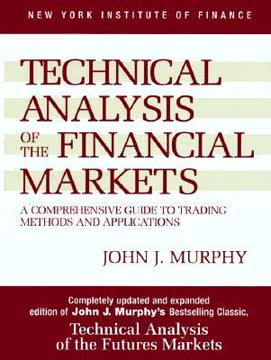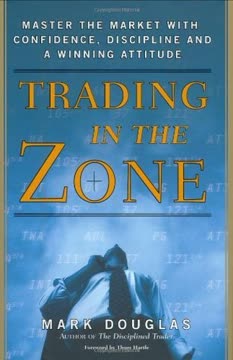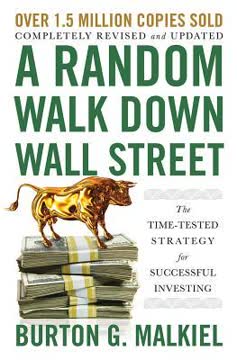つの重要なポイント
1. 心理を制する:感情は成功するトレードの敵である
「誰もハイな状態でお金を稼ぐことはできない。」
感情をコントロールせよ。市場は容赦のない環境であり、感情的な判断は財務的な破滅を招く。成功するトレーダーは冷静かつ合理的な心構えで市場に臨み、勝利の高揚感や敗北の落胆に左右されず、トレーディングプランに集中する。
心理的な罠を見抜け。よくある誤解には以下がある。
- 「頭脳神話」:成功者は秘密の知識を持っていると信じること
- 「自動操縦神話」:自動売買システムだけに頼ること
- 「資金不足神話」:損失を資金不足のせいにすること
精神的な規律を養え。トレードをゲームや娯楽ではなく真剣なビジネスとして扱い、ストレス管理のために以下を実践せよ。
- トレード日誌をつけて意思決定や感情を記録する
- エントリー、エグジット、リスク管理の明確なルールを設定する
- 勝敗の両方から定期的に振り返り学習する
2. 市場心理を理解する:トレンドは大衆の行動を映す鏡である
「市場は事実によって動くのではなく、群衆が事実をどう認識し反応するかによって動く。」
市場は人間の行動を映し出す。価格は市場参加者全員の集合的な意思決定を反映し、その根底には感情や信念、情報への反応がある。この群衆心理を理解することが成功の鍵だ。
トレンドの段階を見極めよ。市場トレンドは一般的に以下のパターンをたどる。
- 蓄積期:知識ある投資家が買い始める
- 公衆参加期:トレンドが明確になり多くの買い手が集まる
- 分配期:賢い資金が遅れて参入した者に売り始める
- パニック期:トレンドが急激に反転する
市場心理を測る指標を活用せよ。新高値・新安値指数、MACDヒストグラム、ストキャスティクスなどを用いて、
- トレンドの強さを確認し、
- 反転の可能性を見極め、
- 過熱感や売られ過ぎの状態を把握する。
3. 強固なトレーディングシステムを構築する:テクニカル分析とリスク管理の融合
「トレーディングシステムはトレンドフォロー系指標とオシレーターを組み合わせるべきだ。」
包括的なシステムを作り上げよ。成功するトレードは以下の要素を統合する。
- トレンドやエントリー・エグジットポイントを特定するテクニカル分析
- 長期的な市場環境を把握するファンダメンタル分析
- 資本を守るためのリスク管理ルール
- 心理的準備と規律
複数の指標を併用せよ。移動平均やMACDなどのトレンドフォロー系指標と、ストキャスティクスやRSIなどのオシレーターを組み合わせて、
- トレンドを確認し、
- 反転の兆候を捉え、
- ダマシのシグナルを排除する。
厳格なリスク管理を実践せよ。重要な原則は以下の通りだ。
- 1回のトレードで口座資金の2%以上をリスクにさらさない
- 損切り注文を必ず設定し損失を限定する
- 利益確定を部分的に行い、利益を確保しつつリスクを減らす
4. 複数の時間軸を活用する:トリプルスクリーン・トレーディングシステムの応用
「トリプルスクリーン・トレーディングシステムはトレンドフォロー系指標とオシレーターを組み合わせ、複数の時間軸で市場を分析する。」
市場を多角的に分析せよ。トリプルスクリーンは3つの「画面」を使ってトレードを絞り込む。
- 長期トレンド(週足など):全体の市場方向を把握
- 中期トレンド(日足など):逆張りのエントリーポイントを探る
- 短期タイミング(分足など):エントリーの微調整を行う
大きなトレンドに従え。長期トレンドの方向にのみトレードを行う。
- 上昇トレンドでは短期の押し目買いを狙い、
- 下降トレンドでは短期の戻り売りを狙う。
複数の指標を時間軸ごとに使い分けよ。
- 週足ではMACDヒストグラムなどのトレンドフォロー系指標
- 日足ではフォースインデックスやエルダー・レイなどのオシレーター
- 短期ではプライスアクションやモメンタム指標を活用する
5. 主要テクニカル指標を活用する:MACD、ストキャスティクス、エルダー・レイ
「エルダー・レイは市場の表面下に潜む強気と弱気の力関係を見抜く手助けをする。」
必須の指標を習得せよ。以下の強力なテクニカルツールを理解し効果的に使いこなすことが重要だ。
MACD(移動平均収束拡散法):
- トレンドや反転の兆候を示す
- ラインのクロスやダイバージェンスで売買シグナルを提供
ストキャスティクス:
- モメンタムを測り、過熱・売られ過ぎを判定
- レンジ相場で特に有効
エルダー・レイ:
- 現在価格と移動平均を比較
- 強気と弱気の勢力の相対的な強さを明らかにする
複数指標の収束を狙え。複数の指標が一致するシグナルは最も強力なトレードの合図となる。
ダイバージェンスに注目せよ。価格が新高値・新安値をつけても指標がそれを裏付けない場合、反転の可能性が高い。
6. 効果的な資金管理を実践する:生き残ることが最優先
「資金管理の第一目標は生き残ることである。」
資本の保全を最優先せよ。資金がなければトレードはできない。重要な原則は以下の通りだ。
- 失っても生活に支障がない範囲の資金だけをリスクにさらす
- 過剰なレバレッジを避ける
- 複数のトレードに分散してリスクを管理する
現実的な目標を設定せよ。短期間で大金を狙うのではなく、安定的で継続的なリターンを目指す。
- 年間25~30%のリターンは優れた成績といえる
- 時間をかけて堅実な実績を築くことに注力する
2%ルールを守れ。1回のトレードで口座資金の2%以上をリスクにしない。
- 連敗の影響を限定し、
- 複数回の損失にも耐えられる資金管理を可能にする。
利益のあるトレードは適切に管理せよ。利益を守りリスクを減らすために、
- トレーリングストップを活用し利益を確保し、
- 予め決めた水準で部分利確を行い、
- 勝ちトレードはリスクを管理しつつ伸ばす。
7. 継続的に学び適応する:市場は変わり続ける、あなたも変わるべきだ
「市場は常に変化し、昨日通用した手法は今日通用せず、ましてや1年後にはなおさら通用しない。」
柔軟性を持て。市場で唯一変わらないのは変化そのものだ。成功するトレーダーは、
- 定期的にトレーディングシステムを見直し更新し、
- 市場環境やボラティリティの変化に適応し、
- 新しいアイデアや手法に常に開かれている。
継続的な学習を受け入れよ。スキルと知識を向上させるために、
- 市場の歴史や過去のトレンドを研究し、
- 自身のトレード(勝ちも負けも)を分析し、
- 経済や地政学的な動向に常に目を光らせる。
手法を検証し洗練せよ。バックテストやデモトレードを活用して、
- 新しいトレードアイデアを実際の資金を使う前に検証し、
- システムのパラメータを最適化し、
- トレーディングプランへの自信を深める。
成長マインドセットを育てよ。困難や挫折を学びと成長の機会と捉え、
- 負けトレードから貴重な教訓を引き出し、
- 他のトレーダーやメンターからフィードバックを求め、
- 常に謙虚に、学ぶべきことは尽きないと認識する。
最終更新日:
FAQ
What's Trading for a Living by Alexander Elder about?
- Focus on Psychology: The book emphasizes the critical role of psychology in trading, highlighting how emotions like fear and greed can impact decision-making.
- Trading Tactics and Money Management: It offers practical trading tactics and money management strategies, essential for long-term success in the markets.
- Three Pillars of Trading: The book is structured around three main pillars: psychology, market analysis, and money management, each contributing to a trader's success.
Why should I read Trading for a Living by Alexander Elder?
- Expert Insights: Written by Dr. Alexander Elder, a psychiatrist and professional trader, the book combines psychological principles with trading strategies.
- Comprehensive Guide: It serves as a complete guide for both novice and experienced traders, offering insights into trading psychology, technical analysis, and risk management.
- Real-World Applications: Dr. Elder shares personal experiences and lessons learned, making the content relatable and applicable to real-world trading scenarios.
What are the key takeaways of Trading for a Living by Alexander Elder?
- Self-Discipline is Crucial: The book stresses the importance of self-discipline in managing emotions and adhering to trading plans.
- Understanding Market Psychology: Recognizing crowd behavior and mass psychology can help traders make informed decisions.
- Risk Management is Essential: Effective risk management is vital for long-term survival, as even the best strategies can fail without it.
How does Trading for a Living define trading psychology?
- Key to Success: Psychology is highlighted as the key to successful trading, with an emphasis on understanding one's own emotions and biases.
- Emotional Roller Coaster: Trading is described as an emotional roller coaster, where managing emotions is essential for maintaining discipline.
- Self-Analysis: Keeping a trading diary is encouraged to analyze decisions and emotional responses, helping identify patterns of behavior.
What is the Triple Screen Trading System in Trading for a Living?
- Three-Step Approach: It involves analyzing the market on three different timeframes to confirm trading signals, filtering out noise for reliable signals.
- Combining Indicators: The system uses a combination of trend-following indicators and oscillators to identify entry and exit points.
- Risk Management Focus: Emphasizes strict money management rules, ensuring traders do not risk more than a predetermined percentage of their capital.
What are the different types of gaps mentioned in Trading for a Living?
- Common Gaps: Occur in quiet markets and are quickly closed, often not significant for trading decisions.
- Breakaway Gaps: Signal the beginning of a new trend with increased volume, indicating a strong shift in market sentiment.
- Exhaustion Gaps: Occur at the end of a trend, signaling a potential reversal and providing excellent shorting opportunities.
How does Trading for a Living explain the concept of trendlines?
- Identifying Trends: Trendlines connect significant highs or lows on a chart, helping traders visualize market direction.
- Support and Resistance: They can act as support in uptrends and resistance in downtrends, providing critical levels for trading decisions.
- Angle of the Trendline: The slope indicates trend strength, with steeper lines suggesting stronger trends.
What are the best quotes from Trading for a Living by Alexander Elder and what do they mean?
- "The key to winning was inside my head and not inside a computer.": Emphasizes the importance of psychology over technical tools in trading.
- "You can have a brilliant trading system, but if your money management is bad, then a short string of losses will destroy your account.": Highlights the necessity of effective risk management.
- "Do not confuse brains with a bull market.": Cautions against overconfidence during market upswings, reminding traders to remain disciplined.
How can I apply the concepts from Trading for a Living to my trading strategy?
- Develop a Trading Plan: Create a detailed plan including entry and exit strategies, risk management rules, and psychological self-assessments.
- Monitor Market Psychology: Pay attention to crowd behavior and sentiment indicators to gauge market mood.
- Practice Risk Management: Implement strict money management rules to protect your account from significant losses.
How does the Triple Screen trading system work in Trading for a Living?
- Three Screens for Analysis: Analyzes trades through three timeframes: long-term trend, intermediate trend, and short-term price action.
- First Screen - Market Tide: Uses a trend-following indicator on a weekly chart to identify the primary trend.
- Second Screen - Market Wave: Applies oscillators to daily charts to find entry points against the tide.
What is the significance of emotional control in trading as discussed in Trading for a Living?
- Impact of Emotions: Emotions like fear and greed can cloud judgment, leading to poor trading decisions.
- Psychological Strategies: Offers strategies for developing emotional resilience, such as setting clear trading rules.
- Long-Term Success: Emotional control is key to achieving long-term success, helping traders follow strategies and avoid costly mistakes.
How can I improve my trading discipline as suggested in Trading for a Living?
- Set Clear Rules: Establish and adhere to clear trading rules, including entry and exit points, risk limits, and profit targets.
- Emotional Awareness: Recognize emotional triggers and their effects on trading decisions, practicing mindfulness and self-reflection.
- Regular Review: Conduct regular reviews of trading performance to identify areas for improvement and reinforce disciplined behavior.
レビュー
『Trading for a Living』は、主に高評価を得ており、平均評価は4.05/5である。読者は、本書がトレーディング心理学、戦術、資金管理を網羅的に扱っている点を高く評価している。初心者から経験豊富なトレーダーまで幅広く役立つ内容とされている。特に、市場心理、リスク管理、テクニカル分析に関する洞察が本書の強みである。一方で、古い事例や繰り返しの多い文体を指摘する声もある。総じて、エルダーの率直な手法と実践的な助言は読者に好評であり、志望するトレーダーにとって必読書と考えられている。
Similar Books

















